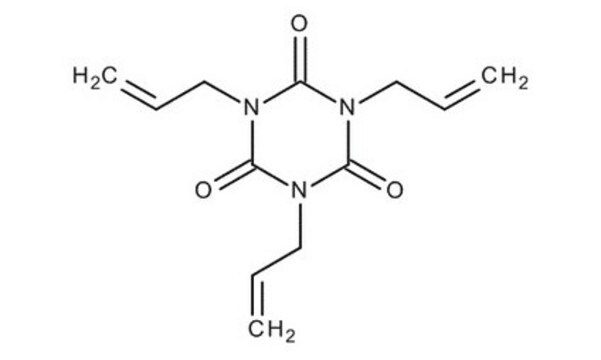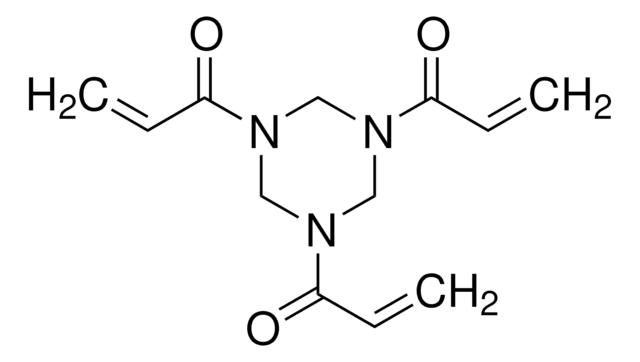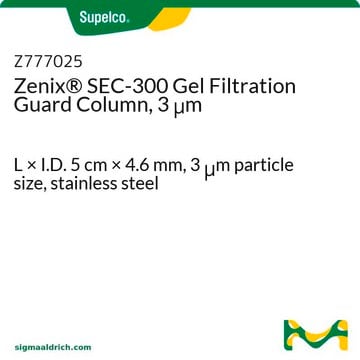114235
1,3,5-Triallyl-1,3,5-triazine-2,4,6(1H,3H,5H)-trione
98%
Synonym(s):
1,3,5-Tri-2-propen-1-yl-1,3,5-triazine-2,4,6(1H ,3H ,5H )-trione, 1,3,5-Triallyl-1,3,5-triazinane-2,4,6-trione, 1,3,5-Triallylisocyanurate, 1,3,5-Triallylisocyanuric acid, 1,3,5-Tris-2′-propenylisocyanuric acid, Triallyl isocyanurate
About This Item
Recommended Products
Assay
98%
contains
500 ppm tert-butylhydroquinone as inhibitor
refractive index
n20/D 1.513 (lit.)
bp
149-152 °C/4 mmHg (lit.)
density
1.159 g/mL at 25 °C (lit.)
SMILES string
C=CCN1C(=O)N(CC=C)C(=O)N(CC=C)C1=O
InChI
1S/C12H15N3O3/c1-4-7-13-10(16)14(8-5-2)12(18)15(9-6-3)11(13)17/h4-6H,1-3,7-9H2
InChI key
KOMNUTZXSVSERR-UHFFFAOYSA-N
Looking for similar products? Visit Product Comparison Guide
General description
Application
- A crosslinking agent or additive in the synthesis of polylactic acid /flax composite materials to enhance their properties and performance under gamma irradiation.
- A monomer in the synthesis of flexible ionogels with good mechanical properties via in situ thiol-ene photopolymerization with trimethylolpropane tris(3-mercaptopropionate). These ionogels further find applications in electrochemical capacitors.
- A monomer in the fabrication of the shape memory polymer substrates.
Signal Word
Warning
Hazard Statements
Precautionary Statements
Hazard Classifications
Acute Tox. 4 Oral - STOT RE 2
Storage Class Code
11 - Combustible Solids
WGK
WGK 1
Flash Point(F)
319.1 °F - closed cup
Flash Point(C)
159.5 °C - closed cup
Personal Protective Equipment
Certificates of Analysis (COA)
Search for Certificates of Analysis (COA) by entering the products Lot/Batch Number. Lot and Batch Numbers can be found on a product’s label following the words ‘Lot’ or ‘Batch’.
Already Own This Product?
Find documentation for the products that you have recently purchased in the Document Library.
Customers Also Viewed
Articles
With dentists placing nearly 100 million dental fillings into patients′ teeth annually in the U.S. alone, polymeric composite restoratives account for a very large share of the biomaterials market.
Our team of scientists has experience in all areas of research including Life Science, Material Science, Chemical Synthesis, Chromatography, Analytical and many others.
Contact Technical Service





![Tris[2-(acryloyloxy)ethyl] isocyanurate](/deepweb/assets/sigmaaldrich/product/structures/254/494/1a620abc-8043-457f-92ec-87a959682438/640/1a620abc-8043-457f-92ec-87a959682438.png)






![Tricyclo[5.2.1.02,6]decanedimethanol diacrylate](/deepweb/assets/sigmaaldrich/product/structures/327/536/0dc81542-b920-47ec-99c1-d064a327a315/640/0dc81542-b920-47ec-99c1-d064a327a315.png)
![Tris[3-(trimethoxysilyl)propyl] isocyanurate technical grade](/deepweb/assets/sigmaaldrich/product/structures/239/690/c24b2d6d-4580-41dd-a3ec-77f7fcb9caaf/640/c24b2d6d-4580-41dd-a3ec-77f7fcb9caaf.png)

